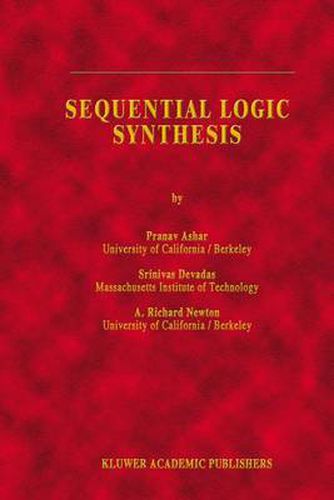Readings Newsletter
Become a Readings Member to make your shopping experience even easier.
Sign in or sign up for free!
You’re not far away from qualifying for FREE standard shipping within Australia
You’ve qualified for FREE standard shipping within Australia
The cart is loading…






This title is printed to order. This book may have been self-published. If so, we cannot guarantee the quality of the content. In the main most books will have gone through the editing process however some may not. We therefore suggest that you be aware of this before ordering this book. If in doubt check either the author or publisher’s details as we are unable to accept any returns unless they are faulty. Please contact us if you have any questions.
Computer-aided design (CAD) of very large scale integrated (VLSI) circuits is concerned with the development of computer programs for the automated design and manufacture of ICs. Automated VLSI design is referred to as VLSI synthesis. Synthesis of VLSI circuits involves transforming a specification of circuit behavior into a mask-level layout which can be fabricated using VLSI manufacturing processes. Optimization strategies are vital in VLSI synthesis in order to meet desired specifications. However, the optimization problems encountered in VLSI synthesis are typically nondeterministic polynomial-time (NP)-complete or NP-hard. Therefore, solutions to the optimization problems incorporate heuristic strategies, the development of which requires a thorough understanding of the problem at hand. Thus, optimization-based VLSI synthesis has evolved into a rich and exciting area of research. Automata theory forms a cornerstone of digital VLSI system design. Sequential Logic Synthesis deals exclusively with finite automata theory and practice. The extensive use of finite state automata, finite state machines (FSMs) or simple sequential logic in VLSI circuits and the recent proliferation of CAD research in the area of FSM synthesis has prompted the writing of this book.
$9.00 standard shipping within Australia
FREE standard shipping within Australia for orders over $100.00
Express & International shipping calculated at checkout
Stock availability can be subject to change without notice. We recommend calling the shop or contacting our online team to check availability of low stock items. Please see our Shopping Online page for more details.
This title is printed to order. This book may have been self-published. If so, we cannot guarantee the quality of the content. In the main most books will have gone through the editing process however some may not. We therefore suggest that you be aware of this before ordering this book. If in doubt check either the author or publisher’s details as we are unable to accept any returns unless they are faulty. Please contact us if you have any questions.
Computer-aided design (CAD) of very large scale integrated (VLSI) circuits is concerned with the development of computer programs for the automated design and manufacture of ICs. Automated VLSI design is referred to as VLSI synthesis. Synthesis of VLSI circuits involves transforming a specification of circuit behavior into a mask-level layout which can be fabricated using VLSI manufacturing processes. Optimization strategies are vital in VLSI synthesis in order to meet desired specifications. However, the optimization problems encountered in VLSI synthesis are typically nondeterministic polynomial-time (NP)-complete or NP-hard. Therefore, solutions to the optimization problems incorporate heuristic strategies, the development of which requires a thorough understanding of the problem at hand. Thus, optimization-based VLSI synthesis has evolved into a rich and exciting area of research. Automata theory forms a cornerstone of digital VLSI system design. Sequential Logic Synthesis deals exclusively with finite automata theory and practice. The extensive use of finite state automata, finite state machines (FSMs) or simple sequential logic in VLSI circuits and the recent proliferation of CAD research in the area of FSM synthesis has prompted the writing of this book.